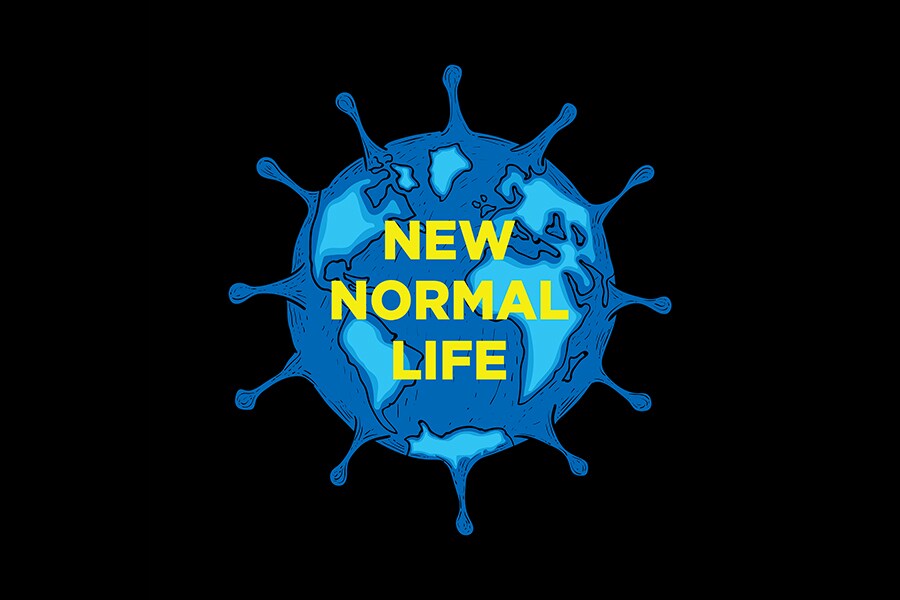
Co-live with Covid-19
Stopping the spread of virus might be possible but eliminating the virus is a very ambitious and a long shot
 Image: Shutterstock
Image: ShutterstockAs the lockdown lifts in phases, coronavirus cases are still on a rise. As per the present lockdown status, India has reported over 1.8 lakhs Covid-19 cases with above 5000 fatalities. Due to the rise in cases, India’s surge will likely to upscale further in the coming days. As expected media coverage of the Unlocking phases is being intensely covered. Given the above, the questions that are still doing the rounds amongst the citizens are if India has reached its peak and by when will India is expected to flatten the curve. Another question we all seem to ponder upon is if community spread has already started and lastly by when can the citizens expect a substantial cure or a vaccine.
India and the world clings onto the hope that once a vaccine is made available, it will help to contain the spread of the virus or even eliminate it. Stopping the spread might be possible but eliminating the virus is a very ambitious and a long shot. As one remembers, it took many years to eradicate polio not to mention the humungous cost of the same. However, the moot question is how do we handle this double whammy: rising COVID-19 cases and the unlocking of the country in different phase?
Firstly, let’s learn to accept that this virus is going to be in our ecosystem for a long time. There will be a new normal that will soon become a part of our daily lives and has already started the course like wearing masks in public and practicing social distancing. The recent past reminds us of many such viruses that are still in our ecosystem, namely Nipah, Zika, SARS, MERS. Fortunately they haven’t created a serious situation like Covid-19 and one can only pray it remains so.
For example, take a look at Tuberculosis. As per India’s TB report in 2019, the number of TB cases in India were 2.7 million in 2018 and over 400,000 people had died. That’s a concerning number of casualties. Many may also ask that we have a vaccine for Tuberculosis called BCG (Bacillus Calmette–Guérin) vaccine and yet we continue to have so many cases. The answer lies within our immune system.
Hence, even if a vaccine is available and given as a preventive measure, it does not mean that we will not get the disease. The search for a vaccine is an arduous task. Typically, it takes a decade and to develop a vaccination. For COVID-19, we are hoping to find a vaccine in approximately 18-24 months. Currently, there are close to hundred vaccine projects being undertaken worldwide to find the cure for COVID-19.
Apart from the official clinical trials, there are so many unknown questions being asked simultaneously which has not been highlighted enough by media. Questions regarding the efficacy of the vaccine, the expected side effects and whether or not the vaccine itself will give rise to the disease (it happened in the case of dengue vaccine where the subjects given the vaccine developed dengue). Other questions that researchers and people want to know are that for what period of time will the vaccine give protection, does one need one dose or multiple and if so in what schedule. Lastly, do manufacturer have the capacity to scale up production. These questions will be asked more frequently as we inch closer to the peak.
If it were a single dose we would require 7.8 billion doses for vaccinating the entire globe. This is nearly impossible. In such a case, it needs to be decided who all should get the vaccine first. Well, it would start with the Healthcare workers, elderly people with or without comorbid conditions, at risk patients, pregnant ladies, essential service providers such as Police, Fire department and so on. Bottom line is that the average person on the street getting vaccinated or wanting to get vaccinated will come pretty low in pecking order.
Another fact is that we go to a Doctor only when we have a disease and not in anticipation of preventing a disease. Adult vaccination rates are very low in India and COVID-19 majorly attacks adult population.
Given that India is testing among the lowest for COVID-19 compared to other countries, it could be possible that herd immunity has already set in. Herd Immunity as defined by GAVI (Global Alliance for Vaccines and Immunization) is the indirect protection from a contagious infectious disease that happens when a population is immune either through vaccination or immunity developed through previous infection.
Since we do not have a vaccine for COVID-19 yet and tests are low, it can be postulated that many of us are already harboring the virus but our immune system is strong enough to keep the virus at bay.
One way or another, we will have to accept that all of us will not be tested unless we have telltale signs of the disease and a vaccine is still a long way off. Best is to accept the reality and co-live with COVID.
By Sriram B., Vice President - Industry Interface and New Initiatives, S. P. Mandali's Welingkar Institute of Management Development and Research (WeSchool), Mumbai.
[This article has been reproduced with permission from Welingkar Institute of Management Development and Research (WeSchool)]




